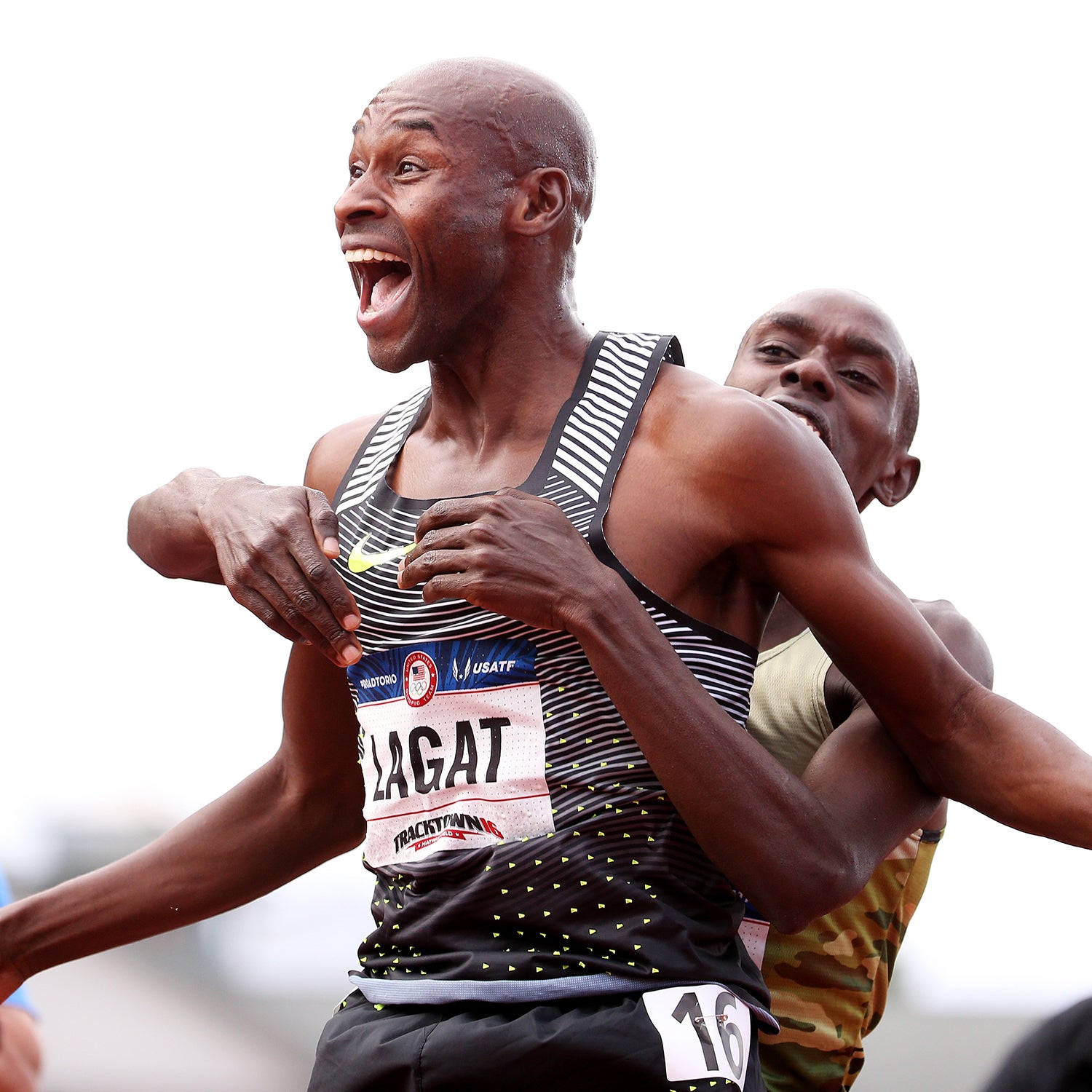Sports journalist Kenny Moore once wrote a on Bernard Lagat, the middle-distance superstar who competed for Kenya before becoming a U.S. citizen in 2004. The theme of Moore’s piece was the improbable longevity of Lagat’s running career, which the author described as “exceeding two full athletic lifetimes.” That story appeared more than eight years ago, in the February 2010 issue of Runner’s World. In March of this year, Lagat, now 43, was the second American finisher at the . If you think there’s something perverse about that, I can assure you that you’re not alone.
While every sport has examples of athletes who seem infuriatingly immune to senescence, Bernard Lagat is in another league entirely. The guy has been competing for so long that even the articles marveling at how long he has been competing have become obsolete. “Will Bernard Lagat Live Forever?” asked one in early 2013. The verdict is still out on that one.
Consider that Lagat has competed in five Olympics, a distinction that puts him in among track and field athletes. The fact is all the more impressive when you take into account that his first games didn’t happen until 2000, when he was 25, an age when many middle-distance runners are at their peak. As it turns out, the impetus for Moore’s profile came back in 2009, when word got out that Lagat was looking to be a contender in 2012 in London. Moore: “This, finally, was outlier crazy. This was inhuman. This made you wonder if there is anyone among us who couldn’t use an object lesson in holding mortality at bay.”
Just to reiterate: Moore was writing about the 2012 Olympics, where Lagat wound up narrowly missing the third Olympic medal of his career by finishing fourth in the 5,000 meters. Inhuman? Perhaps. But with benefit of hindsight, we now know that the real “outlier crazy” shit was still to come.
Four years later, in the men’s 5,000 meters at the 2016 U.S. Olympic Trials, the 41-year-old Lagat was in sixth place going into the last lap of the race. He proceeded to unleash a to win the most competitive 5K ever held at a U.S. Trials. One of the unfortunate things about the esoteric nature of track fandom is that it’s nearly impossible to adequately communicate to someone who doesn’t follow the sport how insane it is that a 41-year-old dude can vanquish a world-class 5,000-meter field by going sub-53 seconds on the bell lap. It’s almost an affront to the laws of nature. (I encourage you to ask the fastest 41-year-old you know to run one lap on fresh legs on your local high school track.)
Although Lagat had the decency to retire from track racing at the end of the 2016 season, he is once again redefining what should be feasible, only this time on the roads. In January, he ran the in 62 minutes flat, breaking Meb Keflezighi’s U.S. masters record for the distance by over a minute. Lagat posted the absurd splits from that race on . “See you back right here when I’m 44,” Lagat wrote in the post, signing off with an “old man” emoji.
For someone who holds the , Lagat seems to be having way too much fun competing in the half marathon. Most middle-distance specialists never make the jump to what is a categorically different type of event. Lagat’s main rival from back in the day was the Moroccan 1,500-meter world record holder Hicham El Guerrouj, who retired in 2006 and never bothered racing anything longer than the 5,000.
I asked James Li, Lagat’s coach of 22 years, to account for the runner’s persistence. Now a distance coach at the University of Arizona, Li first began coaching Lagat when he came to Washington State University as a 21-year-old.
“That’s definitely not the first time the question has been posed,” Li says before offering the following explanation: Lagat’s NCAA career didn’t begin until his early twenties, so he was a late-bloomer of sorts and had the benefit of avoiding overtraining and early burnout. He also has excellent running mechanics, which doesn’t hurt if you want your professional career to last two decades. Also, in most years of that professional career, Lagat would take a training hiatus from mid-September until early November—an unusually long break for a world-class athlete.
But according to Li, the best explanation for the Lagat phenomenon was his remarkable equanimity. “There were just so many situations that would get to people that somehow didn’t get to him,” Li says. Since Lagat’s pro career has been marked by an almost uncanny level of good health, most people don’t know that he was injured for much of his first year as a collegiate runner. By the stratospheric standard of his subsequent successes, Lagat’s college racing days were comparably modest. The eventual world champion in the 1,500 meters never finished better than fourth in his best event at the NCAA outdoor championships. In a sense, Lagat underperformed at Washington State, but, as Li notes, these early disappointments never weighed him down.
“If a race didn’t go very well, he just brushed it off and didn’t think too much about it. He didn’t overanalyze things and just said that next time he’d do better. I think that ability is so important for athletes’ longevity,” Li says.
It would obviously be naive to assume that Lagat’s incredible run isn’t at least partially due to sheer genetic luck. Also, being a middle-distance guy for most of his career, he never ran the kind of heavy-duty mileage that contributed to the premature decline of marathon specialists like Ryan Hall.
But the whole attitude thing shouldn’t be underestimated. For someone so motivated and competitive, Lagat is uniquely relaxed at the same time. When you watch a Lagat interview (even after races where ), there’s a sense of levity, one that feels almost out of place in a sport where top performers often appear as though they are battling inner demons or severe indigestion. Much like the Olympic marathon champion Eliud Kipchoge, who has the habit of grinning during the torturous end stage of a 26-mile race, with Lagat, you always have the sense that he’s enjoying the ride.


